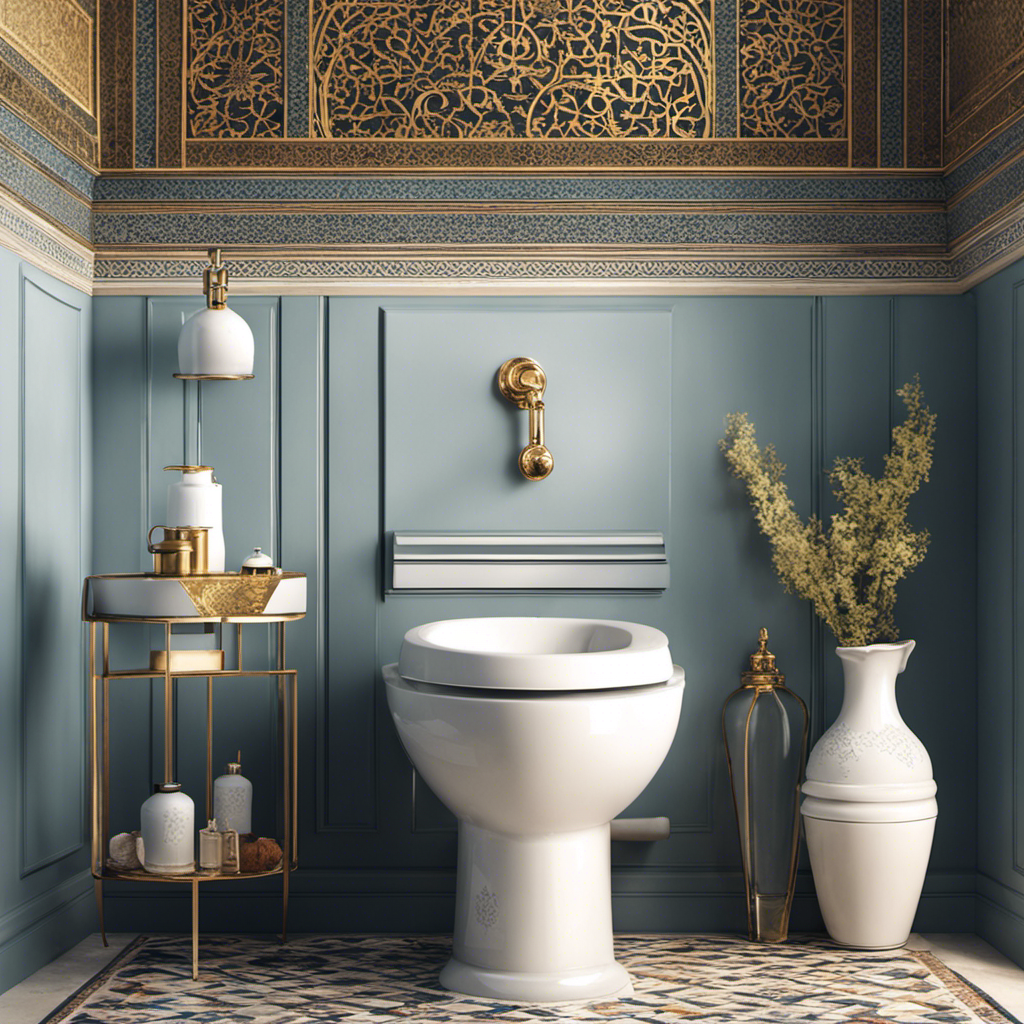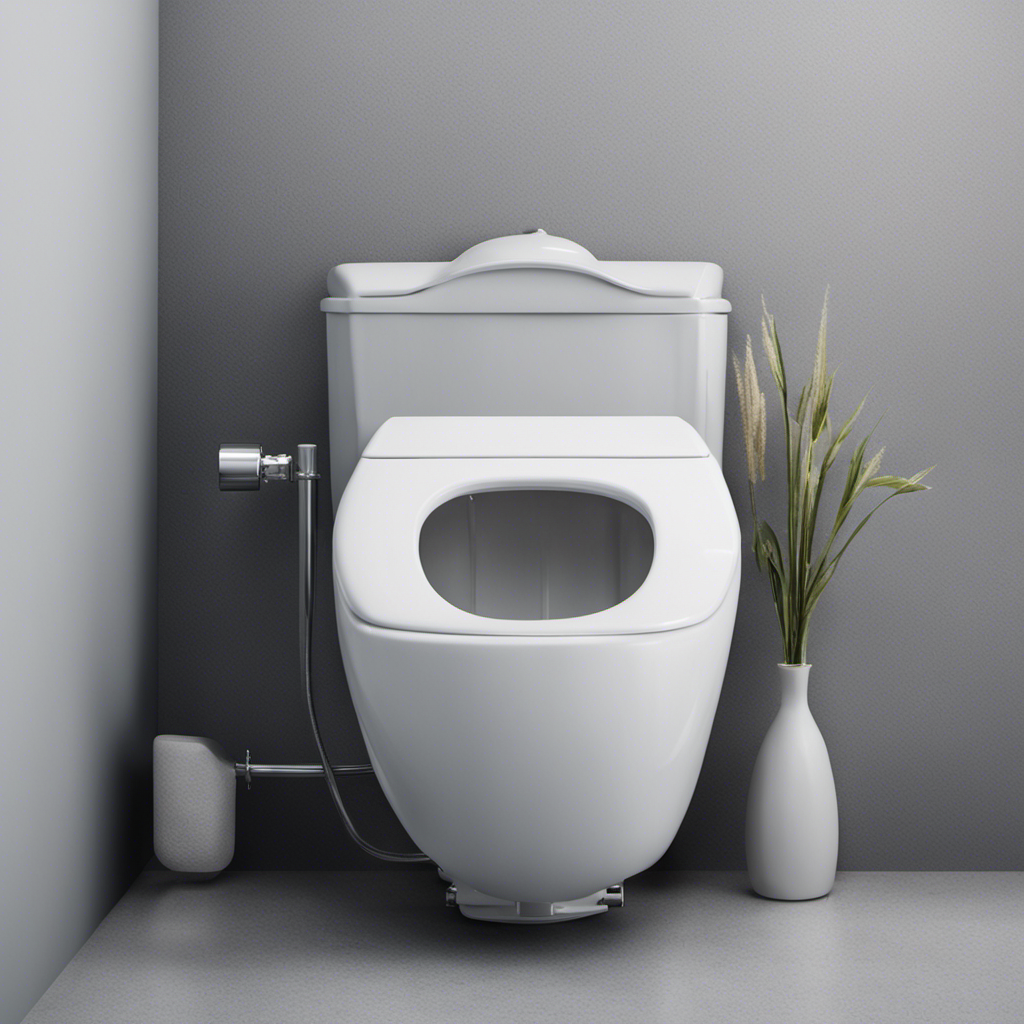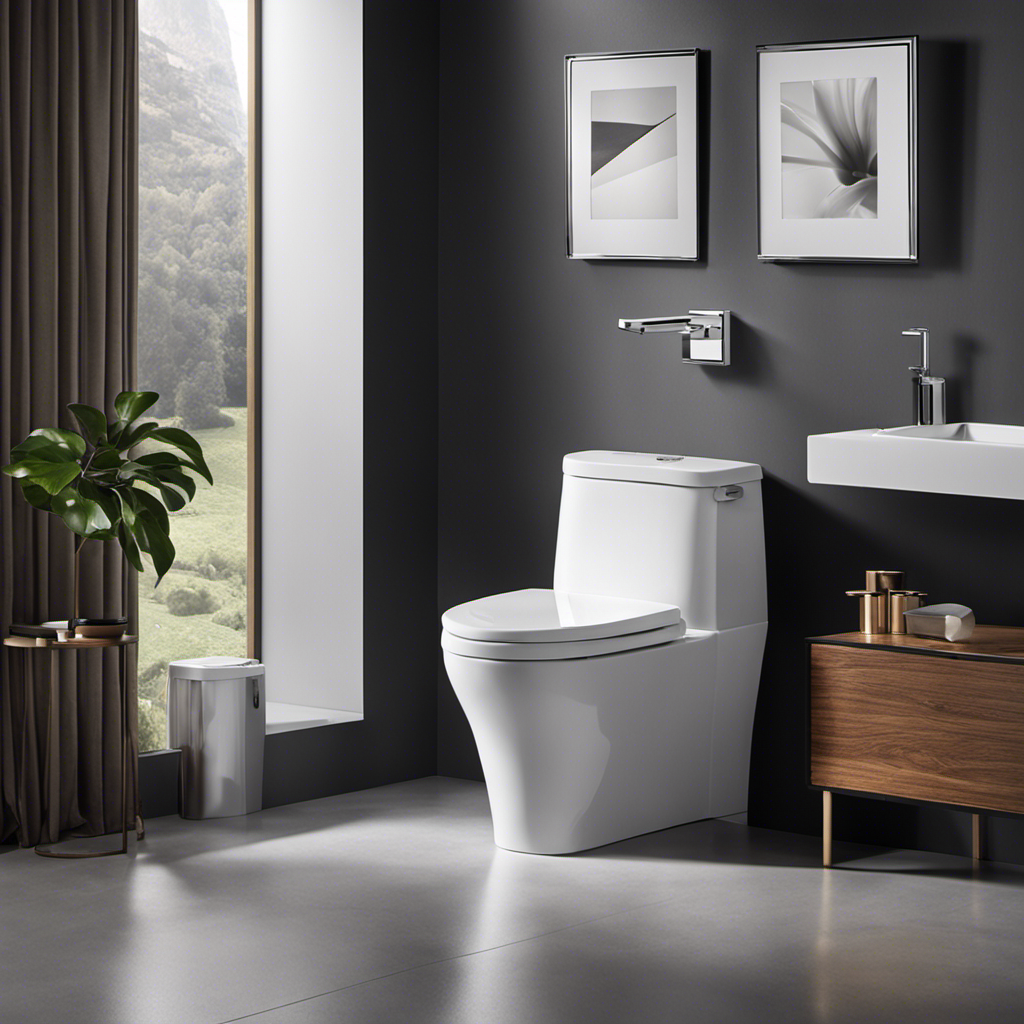I’ve always been curious about different cultural practices, and one question that has piqued my interest is why Muslims don’t use toilet paper. It’s a topic that often sparks curiosity and can be met with misconceptions.
In this article, we’ll explore the historical, cultural, and religious reasons behind this practice. We’ll delve into traditional cleansing methods, environmental considerations, and modern alternatives.
So, let’s dive in and discover the fascinating reasons behind this unique hygiene practice.
Key Takeaways
- Muslims historically used water for cleaning after using the toilet, and this practice dates back to the time of the Prophet Muhammad.
- Water not only physically cleans but also has hygienic benefits by removing bacteria and preventing the spread of diseases.
- Muslims follow cultural and religious practices for personal hygiene, such as using water and the left hand for cleaning (Istinja) and using bidets.
- Water-based cleaning methods, like using bidets, are more environmentally friendly compared to toilet paper, as they reduce paper waste and the associated deforestation.
Historical Practices of Cleaning
The historical evolution of cleaning practices among Muslims provides insight into why they do not use toilet paper. In Islamic tradition, cleanliness is highly valued, both physically and spiritually. Muslims historically used water, in the form of a jug or a bidet, for cleaning after using the toilet. This practice dates back to the time of the Prophet Muhammad, who emphasized the importance of cleanliness. The use of water not only helps to physically clean the area but also has hygienic benefits, effectively removing bacteria and preventing the spread of diseases like urinary tract infections. Additionally, water is considered more environmentally friendly compared to the production and disposal of toilet paper. These historical practices reflect the health implications and cultural preference for water over toilet paper among Muslims.
Cultural and Religious Beliefs
Muslims often follow cultural and religious practices that involve using alternative methods for personal hygiene. The interpretation of cleanliness varies among different cultural practices, leading to diverse methods of cleansing. Some of these practices include:
-
Istinja: Muslims use water and their left hand to clean themselves after using the toilet. This is considered a more thorough and hygienic method.
-
Bidet: In many Muslim countries, bidets are commonly used as a way to cleanse after using the toilet. It provides a gentle stream of water for cleaning purposes.
These practices are deeply rooted in Islamic teachings and cultural traditions, emphasizing the importance of cleanliness for both physical and spiritual well-being. Understanding these practices helps to appreciate the diversity and richness of different cultural beliefs and practices.
Transitioning to the subsequent section about traditional methods of cleansing, it is important to explore the historical practices that have shaped Muslim hygiene traditions over time.
Traditional Methods of Cleansing
To understand traditional methods of cleansing, it may be interesting to explore the historical practices that have influenced hygiene traditions among different cultures.
Ritual purity is an important concept in many cultures, including Islamic traditions.
While toilet paper is commonly used in Western cultures, there are various other methods of cleansing that have been practiced for centuries.
One such method is the use of bidets, which are commonly found in Middle Eastern and European countries. Bidets provide a more thorough and hygienic cleansing experience compared to toilet paper alone.
They are typically used after using the toilet and involve a stream of water to cleanse the genital area. This method is considered to be more effective in achieving ritual purity and maintaining cleanliness.
Environmental and Sustainability Considerations
Using bidets instead of toilet paper can be a more environmentally friendly choice due to their reduced paper waste. Bidets are sustainable alternatives that have a significant impact on water resources. Here are two reasons why bidets are a better option:
-
Reduced Paper Waste
-
Bidets eliminate the need for toilet paper, reducing the demand for paper production and the associated deforestation.
-
By using bidets, we can help preserve our forests and protect biodiversity.
-
Water Efficiency
-
Bidets use water efficiently and effectively for cleansing, requiring significantly less water than the production of toilet paper.
-
Additionally, bidets can be equipped with water-saving features, further reducing water consumption.
Modern Alternatives and Hygiene Practices
There are many modern alternatives and hygiene practices available that can promote cleanliness and sustainability. One such alternative is the use of bidets. Bidets are becoming increasingly popular as they provide a more thorough and hygienic cleaning experience compared to toilet paper. They use water to cleanse, reducing the need for excessive paper consumption. Additionally, bidets are more gentle on the skin and can prevent irritation and discomfort. Another alternative is the availability of wet wipes. While wet wipes are convenient and provide a refreshing clean, they can be harmful to the environment due to their non-biodegradable nature. However, there are now eco-friendly options available that are made from biodegradable materials. These alternatives offer a more sustainable approach to personal hygiene while still ensuring cleanliness.
| Pros | Cons |
|---|---|
| Thorough cleaning | Excessive paper consumption |
| Gentle on the skin | Non-biodegradable |
| Eco-friendly options available | |
| Convenient | |
| Refreshing clean |
Frequently Asked Questions
What Are Some Historical Practices of Cleaning That Are Not Mentioned in the Article?
Historical practices of cleaning have varied across cultures. Some examples include the use of water, leaves, stones, and even corn cobs. Cultural influences on toilet paper use have shaped these practices over time.
How Do Cultural and Religious Beliefs Influence the Use of Toilet Paper Among Muslims?
Cultural norms and religious teachings greatly influence toilet paper use among Muslims. In different Muslim majority countries, the influence of cultural norms varies, while religious teachings emphasize the importance of personal hygiene without specifying the use of toilet paper.
Are There Any Traditional Methods of Cleansing That Are Unique to Certain Regions or Countries?
Traditional cleansing methods vary across regions and countries due to religious and cultural influences on hygiene practices. These methods may include the use of water, bidets, or special cleansing materials, all aimed at maintaining cleanliness and purity.
What Environmental and Sustainability Considerations Are Associated With the Use of Toilet Paper?
To reduce toilet paper waste, we can use bidets or reusable cloth wipes. The production of toilet paper contributes to deforestation, harming the environment. Sustainable alternatives like bamboo or recycled paper can help mitigate this impact.
What Are Some Modern Alternatives and Hygiene Practices That Muslims Use Instead of Toilet Paper?
Modern alternatives and hygiene practices influenced by cultural traditions include the use of bidets, water sprays, or handheld devices for cleansing instead of toilet paper. These methods prioritize cleanliness and are commonly used by Muslims.
Conclusion
In conclusion, after thorough research, it’s evident that the reasons why Muslims don’t use toilet paper stem from historical, cultural, and religious practices.
These traditional methods of cleansing have been upheld for centuries and are deeply ingrained in their beliefs.
Additionally, environmental and sustainability considerations play a significant role in their preference for alternatives.
It’s important to approach this topic with respect and understanding, as different cultures and religions have their unique practices.
By delving deeper into these practices, we can foster tolerance and embrace diversity.










